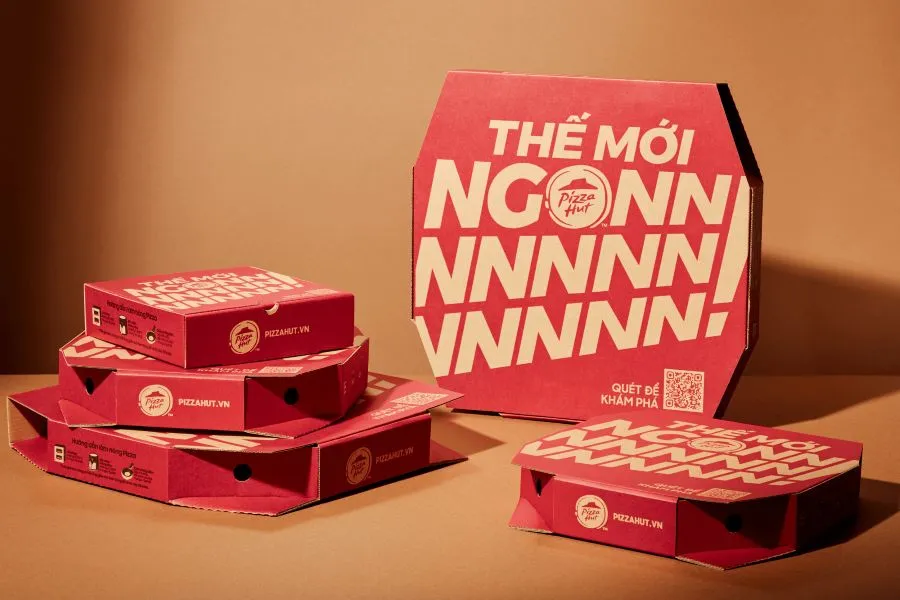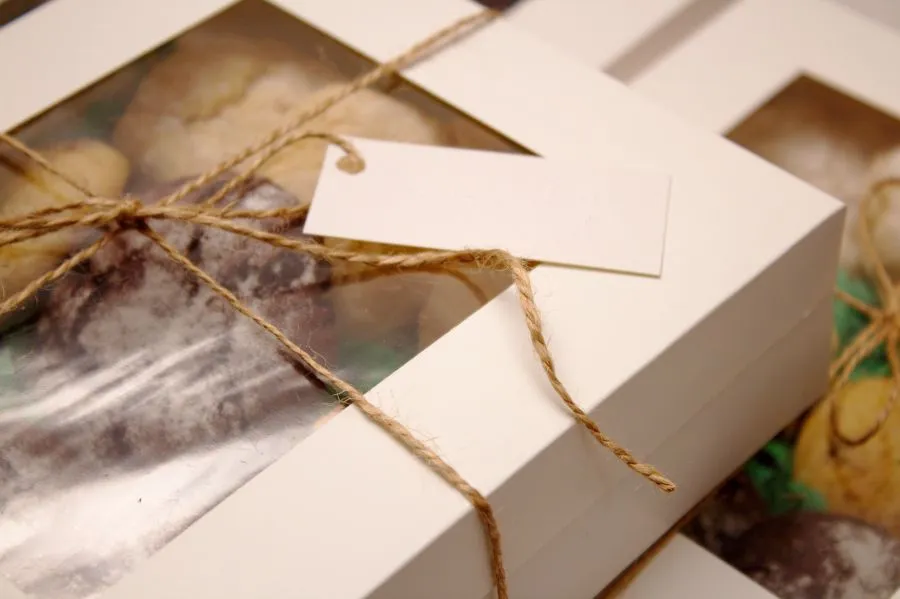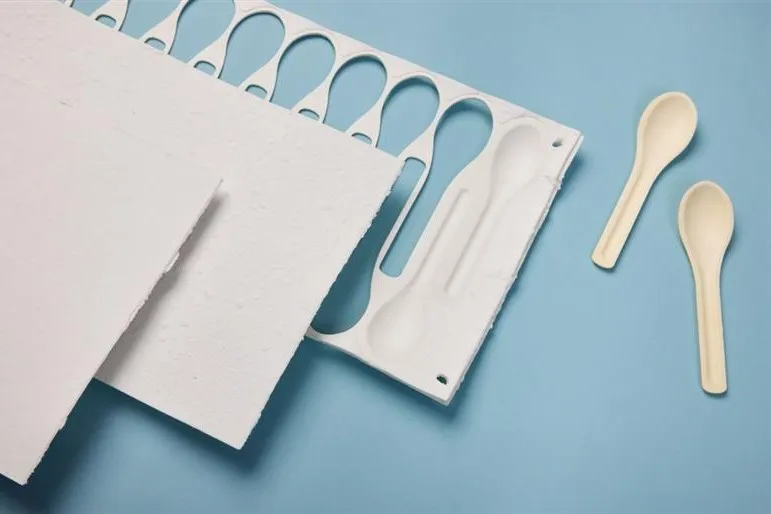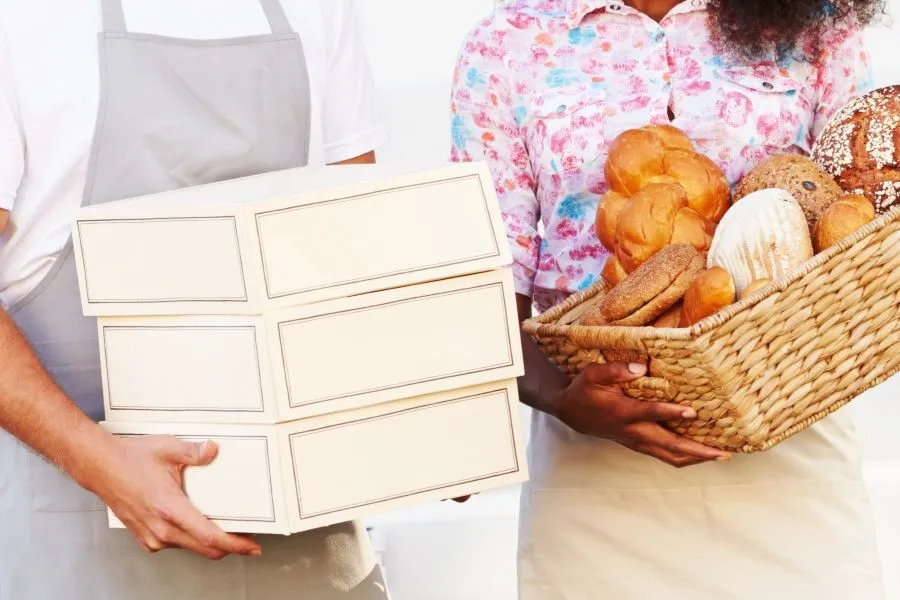The bakery packaging is increasingly shaped by what consumers order and how effectively support products to deliver and disposal. The pursuit of performance and sustainability promotes packaging innovations in the food industry.
Packaging knowledge Research the front line developments in the bakery packaging industry with fiber optic, Jardine Restaurant Group and Innova Market Insights.
Antony Leung, Managing Director of Pizza Hut in the Jardine Restaurant Group, points out that the packaging with the adoption and delivery of food gains in popularity worldwide, which has to provide packaging for three important essentials: comfort, quality and customer experience.
In order to meet the requirements of consumers, Pizza Hut Vietnam, who is operated by the Jardine Restaurant Group, introduced an environmentally friendly hexagonal pizza box design.
“The decision for Pizza Hut Vietnam to take over a hexagonal pizza box was rooted in the strong delivery of the country by the culture of the country, in which secure transport and presentation of pizzas are particularly important. The new design is more stable, better for all pizza areas and eliminates the need for additional plastic components,” he tells us.
 The hexagon box design is intended to reduce more than 6,000 kg of annual disposable plastics that are previously used to prevent a breakdown when stackingPhoto credits: Jardine Restaurant Group).Design for the delivery of food
The hexagon box design is intended to reduce more than 6,000 kg of annual disposable plastics that are previously used to prevent a breakdown when stackingPhoto credits: Jardine Restaurant Group).Design for the delivery of food
Leung announced that the hexagonal packaging concept of Pizza Hut Taiwan was inspired, where a similar design was introduced in 2022 to reduce plastic use.
“With the rise of the delivery orders – often on bicycles over long distances – the team looked for an innovative packaging solution to ensure that pizzas with cheese or multi -layer crusts have remained safe during the entire transport,” he says.
“The Taiwanese team worked closely with suppliers to refine the material thickness and folding techniques, which led to a box that used less paper, supported the weight of pizzas without plastic and could certainly be stacked up to four high – all clear improvements compared to the previous square format.”
Leung emphasizes that the hexagonal box is more compact and is designed in such a way that it offers delivery drivers a greater reliability. The pizza packaging is designed with ventilation holes to prevent the structure of steam and to keep crusts crisp.
According to the global market researcher Innova Market Insights, folded boxes for baked goods rose by 28% last year and, as the second highest growth between packaging types, rose after flat bags.
This year Smurfit Westrock designed a pizza box for Papa Johns, which can record three medium -sized pizzas. The top of the pizza box folds out to achieve a mini football goal or a basketball tire and create a committed experience for customers.
Reduction of plastic waste Companies are pushing for more recyclable and appealing packaging formats.
Companies are pushing for more recyclable and appealing packaging formats.
According to the trend analysis of Innova Market Insights, plastic is the dominant bakery packaging material at 74%, followed by cardboard with 19%and folded boxes with 16%.
Tomi Järvenpää, General Manager at Fibredom, says: “The manufacturers have growing pressure not to replace essential plastics. However, in order to be scaled by the niche, they need alternatives that are in performance and costs near plastic.”
Leung is reminiscent of the trend because the industry is looking for solutions that can tackle plastic packaging waste from baked goods products.
“The key is in the selection of the material with an intelligent design. By replacing plastic lids with FSC-certified paperboard, Pizza Hut Vietnam has significantly reduced unnecessary plastic use,” says Leung. He notes that the packaging uses environmentally friendly inks to lower their general ecological footprint.
Last year Mondi worked with a partnership with Welton, Bibby and Baron, a packaging supplier of the British food and FMCG markets, to introduce recyclable bread bags based on paper. Similar to the plastic packaging, the paper bags have windows so that consumers can see the bread inside.
In the meantime, Amcor started its Amprima Flowpack Pro solution for flatbread and packed pastries. The monomaterials are intended to recycle and intend to overcome the trust of the bakery sector in non -recyclable packaging.
Material crossing
Fibredom aims to make the baked goods and food sector accessible with homemade tablets and plates that imitate the durability of plastic. Järvenpää explains that the key development lies in how the Finnish company functionals the fibers.
 According to Fibredom, its more intelligent material can deliver durability without plastic (Photo credits: glass fiber).“Our patented process creates strength, durability, formability and resistance to moisture only using natural ingredients. No fossil polymers. No synthetic adhesives. Reaching this level of performance without additives is a big deal.
According to Fibredom, its more intelligent material can deliver durability without plastic (Photo credits: glass fiber).“Our patented process creates strength, durability, formability and resistance to moisture only using natural ingredients. No fossil polymers. No synthetic adhesives. Reaching this level of performance without additives is a big deal.
“Many of the biocastial come from plants, but they are chemically modified polymers that often require high -temperature industrial composting. This infrastructure is not available, and even if it is, these materials can contaminate recycling flows. Only because something is called 'organic' does not mean that it is circular or practical.”
“We are different here. Of course, Fasdom breaks open and fits into the systems that people already use -Biowaste -waste buckets, backyard compost heaps and standard -cardboard recycling. This clarity enables true circularity.”
The Jardine Restaurant Group prioritizes the securing of certified materials on the Asian market. “As one of the first Quick service restaurants in Vietnam, which takes over FSC-certified packaging on the level, Pizza is obliged to obtain compliant materials, even though the process was a challenge,” says Leung.
“The wider supply chain still developed access to certified materials, and our supplier used new punch technology for this form. The development of the correct prototype required additional refinement rounds for balance and sustainability.”
In order to overcome the challenge, the Jardine Restaurant Group works with its supplier and enables the company to negotiate more flexible terms and to set up a reliable supply chain to support the packaging transformation.
